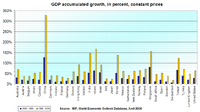
Photo from wikipedia
BACKGROUND Plant growth-promoting rhizobacteria (PGPR) may significantly impact soil microbial community and the growth of plant roots and have critical roles in soil ecosystem functioning. However, the interactions between rhizobacteria… Click to show full abstract
BACKGROUND Plant growth-promoting rhizobacteria (PGPR) may significantly impact soil microbial community and the growth of plant roots and have critical roles in soil ecosystem functioning. However, the interactions between rhizobacteria and plants are extremely complicated and remain understudied. RESULTS In this study, a Bacillus strain was isolated from a long-term maize colonization soil and identified as Bacillus aryabhattai strain LAD. Laboratory tests showed that B. aryabhattai LAD had phosphate-solubilizing and nitrogen-fixing functions which benefit plant growth. The effects of LAD cultures on the root system development of corn seedlings and the structure of rhizosphere bacterial communities were studied. The most significant stimulations of LAD culture on plant growth were observed at a cell density of 102 CFU/mL. Treatment with LAD culture in hydroponics caused an increase of 107%, 197%, and 25% in the shoot length, total root length, and main root thickness, respectively. The LAD treatment also significantly affected the rhizosphere microbial abundance and community structure. The rhizobacterial abundance and species richness in the corn seedlings treated with LAD culture was significantly lower than that in the control group. However, the LAD-treated samples had higher relative abundances of PGPR like Bacillus and Burkholderia than the control samples suggesting that LAD treatment may facilitate the mutualistic relation between the rhizosphere microbiome and the plant. CONCLUSION These results collectively demonstrated that LAD is capable of shaping the rhizosphere microbial community structure and functions as plant growth-promoting agents which makes it a strong candidate for application as bio-fertilizer in agricultural system. This article is protected by copyright. All rights reserved.
Journal Title: Journal of the science of food and agriculture
Year Published: 2022
Link to full text (if available)
Share on Social Media: Sign Up to like & get
recommendations!